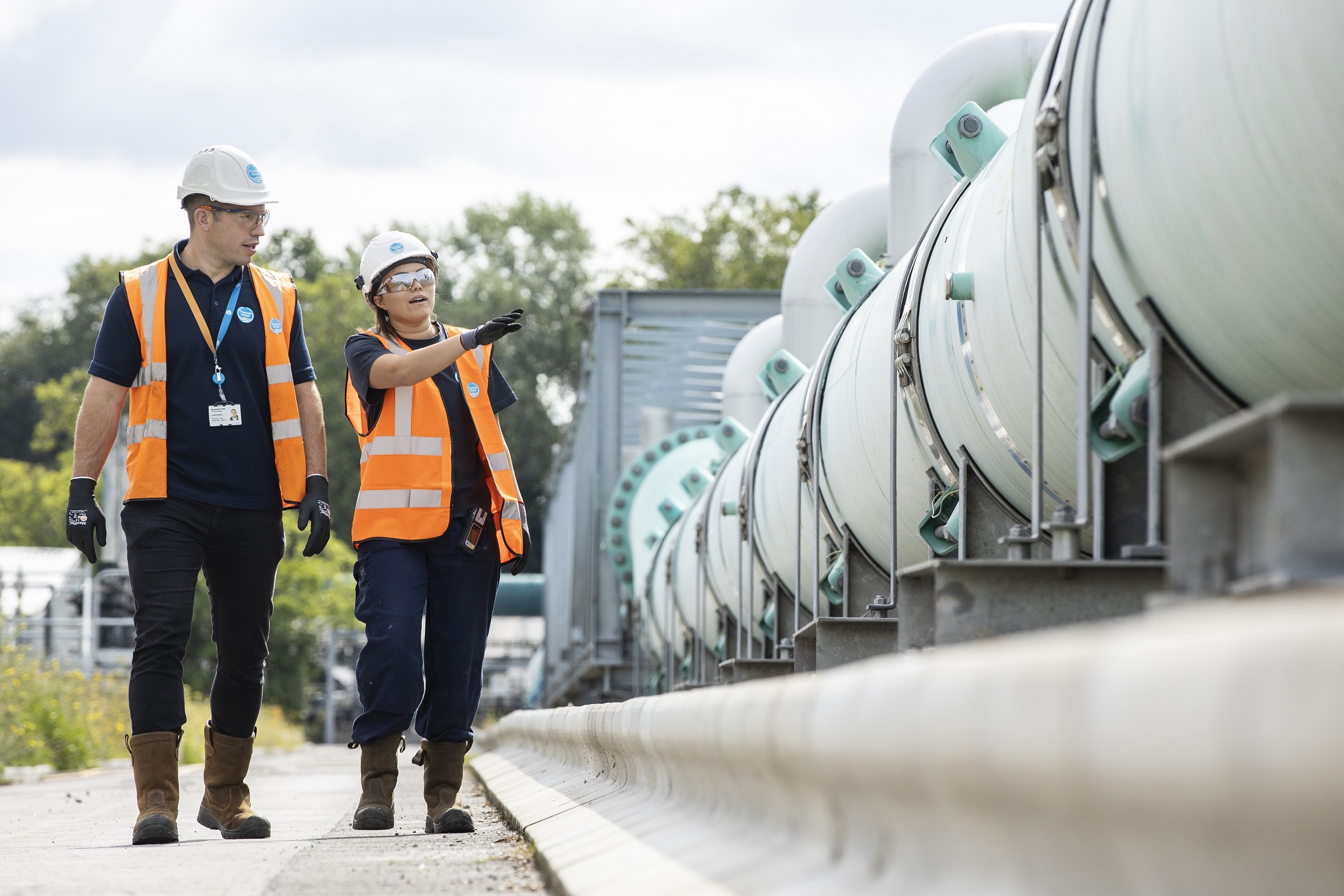Thames Water Utilities Limited Annual Results for the year to 31 March 2025

Two people walk through a sewage treatment works.
Chris Weston, Chief Executive Officer of Thames Water, said:
“Thames Water has made good progress in operational performance, despite the ongoing challenging financial situation.
“The new organisation structure, focused on our infrastructure, brings clearer accountability and has helped our transformation continue to gain momentum. As a result, we have made sustained progress overall against our six critical operational priorities in 2024/25. However, that progress is not demonstrated in our disappointing pollutions outturn. We also delivered best in-AMP performance for seven of Ofwat’s 12 key ‘Water Company Performance Report’ measures.
“Pollutions were adversely impacted by rainfall and high groundwater levels, but we have made progress in terms of addressing many of the underlying causes of our poor performance, including being more proactive in sewer cleaning. While it is disappointing this work was not reflected in performance improvement in the year, we are confident that it will translate into future environmental performance.
“Whilst the external environment is challenging for our colleagues, pleasingly colleague engagement improved, and I am grateful for their continued hard work and support.
“We invested a record £8.5 billion in infrastructure between 2020 and 2025. We enter the new regulatory period of 2025-2030 in a better place than we entered the 2020-25 period with leakage at its lowest ever level, down by 13.2% since 2020. A defining moment last year was the connection of the £4.5 billion Thames Tideway Tunnel to our London network supporting the reduction in sewage entering the tidal River Thames by 95%.
“We recognise that our current gearing is too high and, to address this, we are progressing with our Senior Creditors’ plan to recapitalise the business which will see us return to a more stable financial foundation. This will come with a requirement to re-set the regulatory landscape and acknowledge it will take at least a decade to turn Thames around.”
Operational performance
- We have delivered our best in-AMP performance for Leakage, Supply Interruptions, Complaints and Lost-time Injuries, and Water Quality (CRI) was the second-best result in AMP, sustaining the positive progress made in FY24 and only narrowly (0.04) missing the regulatory deadband.
- Delivered best in-AMP performance for seven of Ofwat’s 12 key ‘Water Company Performance Report’ measures (Supply Interruptions, Leakage, Mains Repairs, Sewer Collapses, Internal Sewer Flooding, Per Capita Consumption, and Priority Services Register).
- Significant rainfall and high groundwater levels led to 34.3% increase in Pollutions (2024: 470; 2023: 350) but progress on addressing underlying causes
- ODI penalties increased to £88.2m from £56.9 million as our regulatory targets became tougher.
Sustainability highlights
- £4.5 billion Thames Tideway Tunnel connected to the London network including existing Lee Tunnel, providing protection for the tidal River Thames
- 6,736 megalitres of sewage diverted from the River Thames into the London Tideway Tunnel system between 24 August 2024 and 22 March 2025
- 408,670 households on social tariff, an increase of 13% (FY24: 358,357)
Financial performance
- Record capital investment of £2,225 million.
- Underlying revenue increased by more than 8% to £2,603 million and Underlying EBITDA increased by over 10% to £1,335 million.
- Underlying operating profit increased by £112 million to £556 million (underlying EBITDA less £779 million of asset depreciation and amortisation plus a small reversal of asset impairment).
- There was an underlying loss before tax of £6 million, down from a profit of £204 million the previous year (underlying operating profit less underlying net finance expense of £414 million and underlying net losses on financial instruments of £148 million).
Total loss before tax was £1,647 million, down from a £157 million profit before tax in 2023/24 (underlying loss before tax less exceptional costs totalling £1,776 million partially offset by a £135 million profit related to billing on behalf of Bazalgette Tunnel Limited). The exceptional costs are broken down as follows: -
- £1,271 million expected credit loss provision recognised against the intercompany loan receivable from TWUL’s immediate parent company Thames Water Utilities Holdings Limited. This balance is now fully provided for as it is not deemed recoverable.
- £33 million on turnaround and transformation expenditure.
- £122 million of provisions raised for fines as a result of Ofwat investigations.
- £151 million of restructuring costs.
- £198 million of consent fees related to our restructuring plan.
With the exception of turnaround expenditure, which enables more efficient and improved services for customers, the exceptional costs will not be borne by customers as reported within our Annual Performance Report.
Financial resilience
- AMP8 Final Determination (FD) allowance of £20.5 billion does not appropriately support the investment required nor the turnaround of the company and we referred to the CMA which is currently on hold.
- Creditors continue to support the business liquidity requirements through a super senior facility.
- Liquidity of £1.7 billion as at 31 March 2025, comprising cash of £0.2 billion and £1.5 billion super senior loan facility.
-
Equity raise process continues.